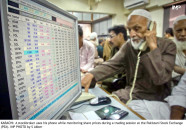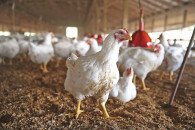Large scale manufacturing: Fall in output dims prospects of economic revival
Output in LSM sector plunged 2.3% from July through November, government pins hopes on wheat production.

According to data released by the Federal Bureau of Statistics on Thursday, provisional LSM production shows a decline of 2.3 per cent in the output of the first five months of the current fiscal year, compared with the corresponding period of the preceding year.
Computed on the basis of the output of 100 items, the provisional data highlights that production followed a negative trend due to the fall in output from petroleum and other major industries.
According to the data provided by the Oil Companies Advisory Committee, petroleum production fell by 10.6 per cent during the period, while the production of diesel and furnace oil also contracted. Circular debt is the major reason behind negative growth in LSM, asserted Governor State Bank of Pakistan Shahid Kardar, while briefing the Senate’s standing committee on finance.
Meanwhile, the flood-hit agriculture also sector also showed negative growth during the first quarter (July-September) of the current fiscal.
Sugar production dipped by over 75 per cent in the five months and Senator Haroon Akhtar, whose family owns sugar factories, attributes the fall to the late start of the cane crushing season, delayed on account of the floods. However, production is expected to rise in the coming months.
The production of coke by Pakistan Steel Mills (PSM) dropped 13 per cent and pig iron 25.5 per cent. PSM is currently operating at only 42 per cent capacity due to liquidity concerns.
Moreover, output of cigarettes dropped by 5.2 per cent, cotton yarn by 12 per cent and jute goods by 25 per cent.
Last year, overall growth stood at 4.1 per cent, with LSM and the services sector being the major contributors. For the current financial year the government had projected growth of 4.5 per cent in national output but the target has now been revised to 2.5 per cent.
“With massive power outages and continuous tightening of the monetary policy, even the revised target of 2.5 per cent growth seems very difficult to achieve,” said Senator Haroon Akhtar, a member of the committee on finance. He added the government has now pinned all hopes on the production of 25 million tons of wheat in order to reach the revised target.
The annual plan of for fiscal 2010-11 says: “Pakistan’s economic prospects and its future growth rates are dependent upon improvement in the law and order situation, reduction in power shortages and further deepening of power reforms, particularly of tax administration.”
Published in The Express Tribune, January 14th, 2011.


















COMMENTS
Comments are moderated and generally will be posted if they are on-topic and not abusive.
For more information, please see our Comments FAQ